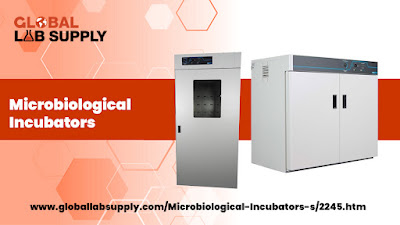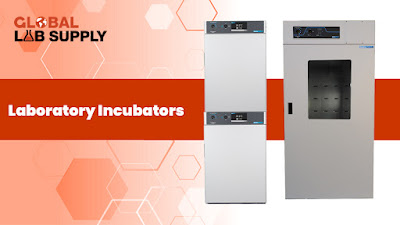Temperature control is a crucial aspect to contemplate when investing in laboratory incubators. Maintaining a consistent and precise temperature range is necessary for the success of experiments and cultures. Moreover, factors such as humidity levels, CO2 control, size and capacity, automation features, and sterilization methods should also be carefully evaluated before making a decision. These key elements play a significant role in determining the efficiency and reliability of the laboratory incubators, ultimately impacting the quality of research outcomes. Understanding and prioritizing these factors will help you make an informed choice that aligns with your specific laboratory needs and budget constraints.
Types of Laboratory Incubators
For laboratories looking to
purchase incubators, it is crucial to understand the different types available
in the market. Each type of laboratory incubator caters to specific
requirements and applications, making it important to choose the right one for your
research needs. To help you make an informed decision, let's explore the
various types of laboratory incubators:
|
CO2 Incubators |
Refrigerated Incubators |
|
Shaking Incubators |
Multi-Gas Incubators |
CO2 Incubators
Types of laboratory
incubators, such as CO2 incubators, are designed to provide a controlled
environment for cell culture growth. These incubators regulate temperature,
humidity, and carbon dioxide levels to mimic the physiological conditions
necessary for cell proliferation. CO2 incubators are important for research
involving cell lines, tissues, and microorganisms that require a specific CO2
concentration for optimal growth.
When deciding on a CO2
incubator, factors to consider include the capacity, contamination prevention
features, and CO2 control precision. It is crucial to choose a CO2 incubator
that meets your research requirements and maintains a stable environment for
cell culture growth. This ensures reproducible results and prevents
experimental variability.
Refrigerated Incubators
For laboratories that
require low-temperature settings for storing samples or conducting experiments,
refrigerated incubators are an ideal choice. These incubators offer precise temperature
control below ambient levels, making them suitable for applications such as
microbiology, biotechnology, and pharmaceutical research. Refrigerated
incubators are important for preserving samples that are temperature-sensitive
or require long-term storage.
It is important to consider
the temperature range, uniformity, and energy efficiency when selecting a
refrigerated incubator. The ability to maintain a consistent temperature
throughout the chamber is crucial for sample integrity and experimental reproducibility.
Additionally, energy-efficient features can help reduce operating costs and
environmental impact.
Shaking Incubators
On top of temperature and
environmental control, shaking incubators provide agitation to samples,
facilitating cell culture growth, microbial cultures, and biochemical
reactions. These incubators are equipped with a platform that moves samples in
a controlled manner, promoting better mixing and oxygenation. Shaking
incubators are important for applications requiring consistent agitation and
uniform growth conditions.
The versatility of shaking
incubators allows researchers to customize shaking speed, temperature, and
other parameters to suit their specific experimental needs. This ensures
optimal conditions for cell growth, protein expression, and other biological processes.
The ability to control agitation levels helps improve cell yields and
experimental outcomes.
Multi-Gas Incubators
An important consideration
for laboratories conducting research involving anaerobic or microaerophilic
organisms is the use of multi-gas incubators. These incubators can control not
only CO2 levels but also oxygen, nitrogen, and other gases to create precise
atmospheric conditions. Multi-gas incubators are important for studying
microbial growth, cell metabolism, and drug sensitivity under different gas
compositions.
For instance, researchers
studying the effects of varying oxygen levels on cell behavior or investigating
the response of pathogens to different gas environments require multi-gas
incubators. These incubators provide a versatile platform for creating customized
atmospheric conditions to support a wide range of research applications. The
ability to control multiple gas parameters ensures the reproducibility and
accuracy of experimental results.
Key Considerations for Purchase
Temperature Range and Uniformity
Despite being a fundamental
requirement for a laboratory incubator, the temperature range and uniformity
are critical factors to consider when making a purchase. The ability of the
incubator to maintain a consistent temperature throughout its chamber directly
impacts the accuracy and reliability of experiments.
|
Temperature Range |
Uniformity |
|
Ensure the incubator's temperature range
meets the requirements of your experiments. |
Look for incubators with uniform temperature
distribution to prevent hot or cold spots. |
The temperature range should
cover the necessary spectrum for your research, while uniformity ensures that
all samples experience the same conditions, reducing variability and ensuring
reproducibility of results.
Humidity and CO2 Control
The control of humidity and
CO2 levels within a laboratory incubator is crucial for cell culture
applications. Maintaining the desired environmental conditions is important for
cell growth, viability, and experimental success.
Temperature plays a
significant role in regulating humidity levels inside the incubator. As the
temperature rises, the air's ability to hold moisture increases, affecting the
humidity levels. It is important to consider this relationship when setting up experiments
that require specific humidity conditions.
Size and Capacity
When identifying a
laboratory incubator, the size and capacity of the unit are key factors to
consider. The incubator should have adequate space to accommodate the volume of
samples you plan to work with, without overcrowding or underutilizing the
space.
Consider the type and size
of containers used for your experiments to ensure they fit comfortably inside
the incubator. Additionally, factor in the potential growth of your research
projects and choose an incubator with sufficient capacity to accommodate future
needs.
Ease of Cleaning and Maintenance
Plus, the ease of cleaning
and maintenance of a laboratory incubator contributes to its overall efficiency
and longevity. A well-maintained incubator not only ensures the integrity of
your samples but also extends the lifespan of the equipment.
Capacity The design of the
incubator should facilitate easy cleaning of the interior surfaces and
components to prevent contamination and microbial growth. Consider models with
removable shelves, rounded corners, and accessible drainage systems for hassle-free
maintenance.
Additional Features and Technologies
Programmability and Alarms
Unlike conventional
incubators, modern laboratory incubators come equipped with advanced
programmability features and alarms that make them highly efficient and
user-friendly. With programmable settings, users can easily set precise
temperature, humidity, and CO2 levels for their experiments, allowing for
accurate and reproducible results. Additionally, alarms can be set to alert
users in case of any deviations from the set parameters, ensuring the safety of
the samples being incubated.
Furthermore, some incubators
offer the flexibility of creating and storing multiple user-defined programs,
making it convenient for researchers to switch between different experimental
protocols without having to reprogram the settings every time. The
programmability and alarm features in modern laboratory incubators not only
streamline the incubation process but also contribute to maintaining the
integrity of the samples being studied.
Energy Efficiency
The energy efficiency of
laboratory incubators is a crucial factor to consider when purchasing these
instruments. The latest models of incubators are designed to be
energy-efficient, utilizing advanced technologies such as insulated walls,
efficient heating elements, and improved airflow systems to minimize energy
consumption. This not only helps in reducing operating costs but also
contributes to environmental sustainability by lowering carbon footprint.
Any modern laboratory
looking to optimize its energy usage and reduce operating expenses should
invest in energy-efficient incubators. These models are designed to maintain
precise and stable conditions inside the chamber while consuming minimal
energy, making them a cost-effective and eco-friendly choice for research
facilities.
Data Logging and Connectivity Options
With the advent of digital
technology, laboratory incubators now come equipped with data logging
capabilities and connectivity options that allow users to monitor and control
the incubation process remotely. Data logging features enable users to record temperature,
humidity, and other critical parameters over time, providing valuable insights
for analysis and documentation.
Options such as USB ports,
Wi-Fi connectivity, and compatibility with laboratory management software
enable seamless data transfer and real-time monitoring of the incubation
process. Researchers can access the data remotely, set alerts, and make
necessary adjustments to the parameters, ensuring optimal conditions for their
experiments.
Options such as USB ports,
Wi-Fi connectivity, and compatibility with laboratory management software
enable seamless data transfer and real-time monitoring of the incubation
process. Researchers can access the data remotely, set alerts, and make
necessary adjustments to the parameters, ensuring optimal conditions for their
experiments.
Economic Considerations
Initial Purchase Price vs. Long-Term Costs
Not only should you consider
the initial purchase price when buying a laboratory incubator, but also take
into account the long-term costs associated with maintenance, energy
consumption, and repairs. A cheaper incubator upfront may end up costing more in
the long run if it requires frequent repairs or has high energy consumption.
Long-term costs should be
carefully evaluated, including factors such as energy efficiency, durability,
and maintenance requirements. Investing in a higher quality, more expensive
incubator with lower energy consumption and longer lifespan can result in cost
savings over time.
Warranty and Service Contracts
For peace of mind and cost
savings in the long run, it is vital to consider the warranty and service
contracts offered with the laboratory incubator. These contracts can provide
coverage for repairs, maintenance, and replacement parts, reducing the risk of
unexpected expenses.
For laboratory equipment as
critical as an incubator, having a comprehensive warranty and service contract
in place can help ensure the equipment functions optimally and prolong its
lifespan. It is advisable to opt for extended warranties or service contracts
to protect your investment and avoid costly repairs.
Final Words
Considering all points
discussed, it is evident
that when purchasing laboratory incubators, several key factors must be
carefully considered to ensure the right choice is made. Factors such as
temperature range, humidity control, capacity, safety features, and ease of
maintenance are all crucial in selecting the most suitable incubator for your
research needs. By thoroughly evaluating these factors and making informed
decisions, researchers can acquire a laboratory incubator that meets their
specific requirements and ultimately contributes to the success of their
experiments. It is vital to prioritize quality, reliability, and functionality
when investing in a laboratory incubator, as these instruments play a vital
role in maintaining optimal conditions for cell culture and other sensitive
experiments. By understanding and considering these key factors, researchers
can make well-informed decisions when purchasing laboratory incubators.




